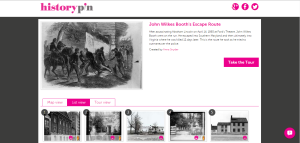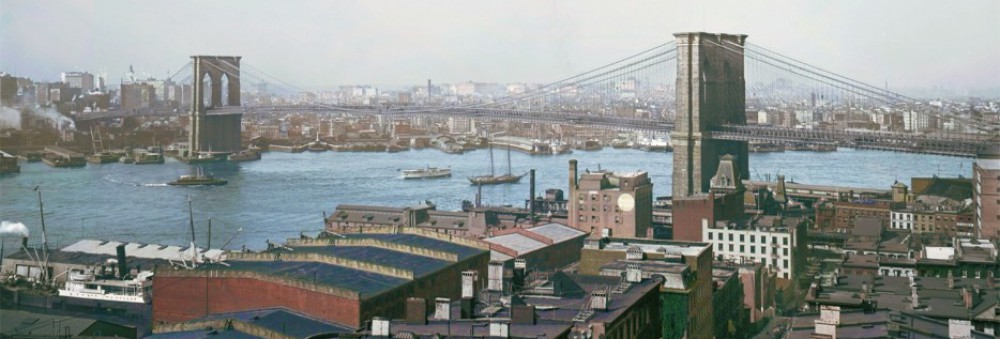 For this week, we needed to create a tour on Historypin.
For this week, we needed to create a tour on Historypin.
Like the rest of our assignments, this was fairly easy to do; choosing a topic and finding the images was the hardest part. However, I have some experience with Historypin, so I was already familiar with the site and its structure.
I chose to trace John Wilkes Booth’s escape route following the assassination of Abraham Lincoln.
What’s so great about Historypin (and other like-minded sites) is that you can compare and contrast images from today and a hundred years ago. Of course, it doesn’t always work because sometimes the views just don’t line up, but it’s a really neat feature and it lets people “bridg[e] the gap between the place that was and the place that is,” as John Russick so eloquently puts it.
However, Historypin is not perfect. There are definitely elements about it that could use some fixing. Sometimes you don’t necessarily know the exact date and their provided range only goes up to +/-15 years, which while that sounds like a lot, really isn’t. Their mapping feature also takes a little time to get used to and can sometimes be temperamental.
Yet, based on my experience with other digital sites, nothing is foolproof. Historypin’s main asset is the ability to see historic photos on a map, to compare those photos with what places look like today, and the fact that anyone can collaborate and create an account.
Anyone who has or finds a historic photo can upload it and similarly, any institution with a collection of images can do the same. This is great for smaller places that lack the funds and resources to build their own website, but want to engage with the public in a more digital way.
To bring this back to Russick once more, these mobile sites have the potential to “foster a new, robust relationship between the twenty-first-century communities we serve and the collections we care for.”
So while they are not perfect, these places are better than nothing and definitely a good starting point for reaching out to the masses.
